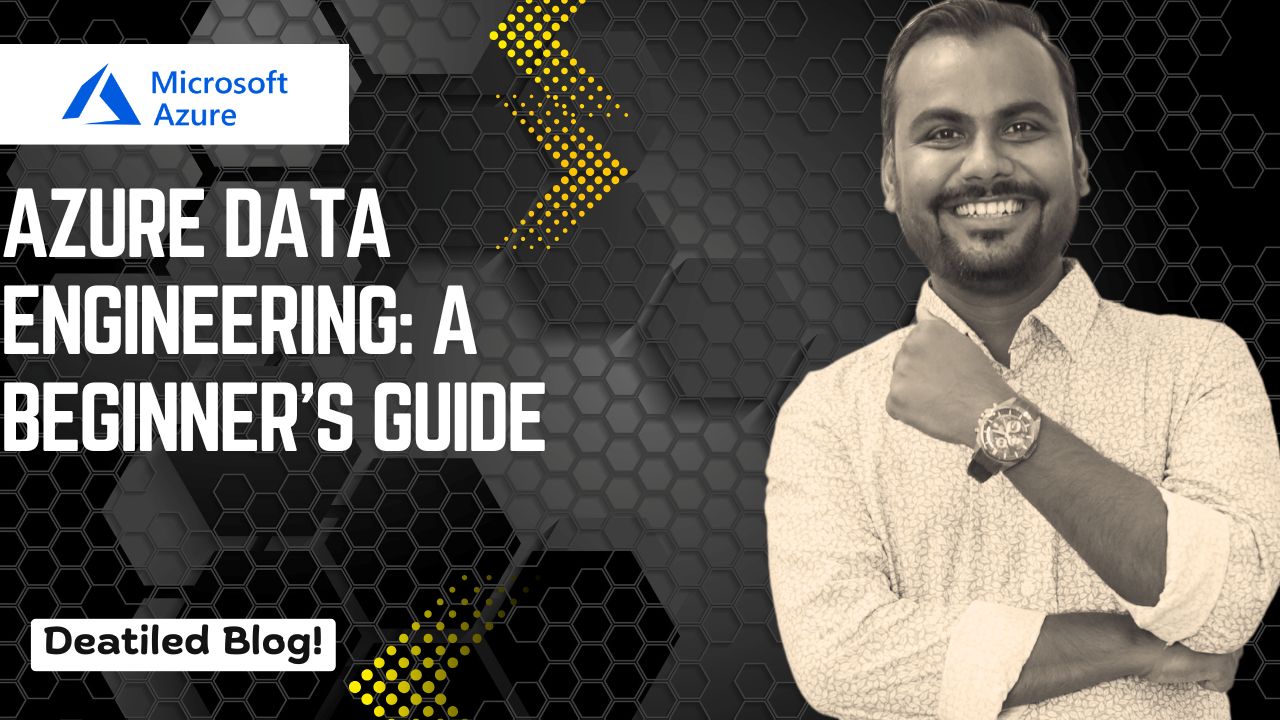Azure Data Engineering: A Beginner’s Guide
🚀 Azure Data Engineering: A Beginner’s Guide
1. What is Azure?
If you’re exploring cloud platforms, this Azure Data Engineering Beginner Guide will help you understand how Microsoft Azure empowers businesses to manage, store, and analyze data at scale. At Learnomate Technologies Pvt Ltd , we make these concepts simple and practical for learners and professionals.
2. Why Cloud?
Traditional on-premises systems are costly, rigid, and hard to scale. The cloud solves these challenges:
⚡ Scalability – Pay only for what you use and scale instantly.
💰 Cost Savings – No upfront investment in hardware.
🔒 Security & Compliance – Enterprise-grade security with global standards.
🌍 Accessibility – Access data and services from anywhere.
🔄 Innovation – Leverage AI, analytics, and automation tools.
3. Why Azure?
Among many cloud providers (AWS, GCP), Azure is a top choice for enterprises:
🌐 Global Presence – Data centers in 60+ regions worldwide.
🤝 Enterprise Integration – Seamless with Microsoft ecosystem (Office 365, Active Directory, Power BI).
📊 Data & AI Services – Strong support for big data, machine learning, and analytics.
🛡️ Security – 90+ compliance certifications.
🚀 Hybrid Capabilities – Works well with on-prem + cloud mix.
4. Key Definitions
Before diving deeper, let’s clarify some important cloud terms:
Subscription – A billing container for Azure resources.
Resource Group – Logical container for related resources.
Region – Geographical location of Azure data centers.
VM (Virtual Machine) – Cloud-based server for compute tasks.
Azure Storage – Scalable cloud storage solutions (Blob, Table, Queue, File).
5. Azure’s Key Data Engineering Components
An Azure Data Engineer works with tools that move, transform, and manage data. The key services include:
🔄 Azure Data Factory (ADF) – Orchestrates data pipelines for ingestion & transformation.
📦 Azure Data Lake Storage (ADLS) – Stores structured & unstructured data at scale.
⚡ Azure Databricks – Apache Spark-based analytics platform for big data & ML.
📊 Azure Synapse Analytics – Data warehouse for analytics and reporting.
🔒 Azure Key Vault – Securely manages secrets, keys, and credentials.
🛠️ Azure Stream Analytics – Processes real-time streaming data.
6. How They All Come Together
Here’s a simplified workflow of Azure Data Engineering:
1️⃣ Ingest Data from on-prem, APIs, IoT → using ADF
2️⃣ Store Data in ADLS (raw zone)
3️⃣ Transform Data with Databricks / ADF Mapping Data Flows
4️⃣ Load into Synapse for analytics & reporting
5️⃣ Secure & Govern using Key Vault + Azure Purview
6️⃣ Consume Data via Power BI / Machine Learning Models
👉 This end-to-end pipeline ensures raw data → trusted insights.
Final Thoughts
Data quality checks and validations are not just a “good-to-have” in modern Azure Data Engineering workflows, they are absolutely essential. Whether you’re building ETL pipelines in ADF or running Spark jobs in Databricks, ensuring that bad data doesn’t sneak into your downstream systems is a non-negotiable part of your role. As you’ve seen in this article, setting up reusable validation frameworks, incorporating alerts, and actively monitoring for anomalies can save you hours (if not days) of debugging and backtracking.
At Learnomate Technologies Pvt Ltd, we provide comprehensive and practical training on Azure Data Engineering, with a focus on solving real-world problems like the ones discussed here. Our batches aren’t just about learning tools, they’re about mastering the mindset needed to become a problem-solver in the data domain.
If you want to see this in action, I highly encourage you to visit our YouTube channel at www.youtube.com/@learnomate where we regularly share hands-on tutorials, student success stories, and practical demonstrations.
For complete information about our offerings, visit our official website: www.learnomate.org
Also, feel free to connect with me on LinkedIn: Ankush Thavali I regularly post insights, tips, and community updates there.
If you want to read more about different technologies, check out our blog section at: https://learnomate.org/blogs/
This article is just one piece of my personal prep as I gear up for our next Azure Data Engineering batch, all based on notes, tweaks, discoveries, and hard-earned optimizations. The kind of stuff you don’t usually find in documentation. The kind of stuff that comes only when you brew your learning like the perfect chai.
See you in class. Keep learning. Keep building.






